What Aspect Of Spaceflight Always Blows Your Mind, Even After All This Time?
What aspect of spaceflight always blows your mind, even after all this time?
More Posts from Nasa and Others
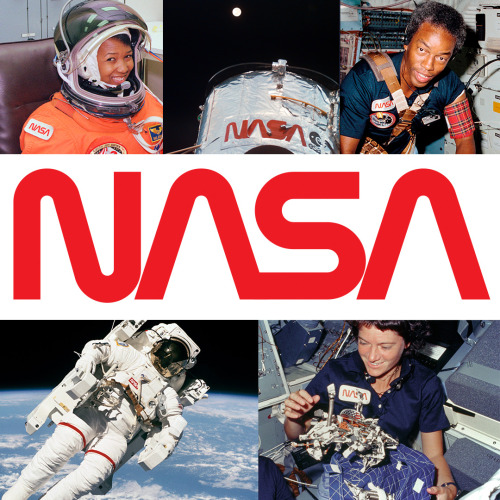
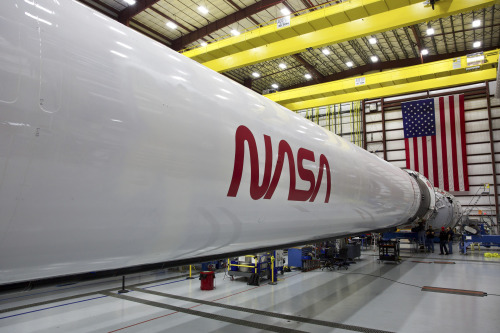
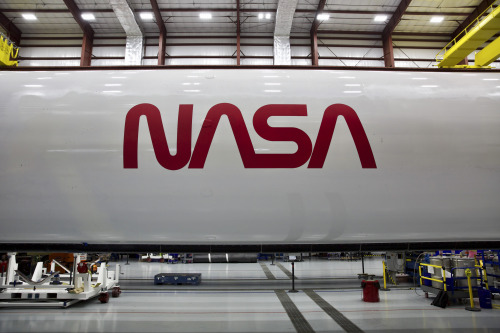
Retro. Modern. Iconic. That’s the worm.
#TheWormIsBack
Our beloved symbol of exploration will fly once again, just in time to mark the return of human spaceflight on American rockets from American soil. The retired logo is making its comeback on on SpaceX’s Falcon 9 rocket that will take flight later this year when we #LaunchAmerica once again.
The NASA insignia, or "meatball," seen in our profile image, was quite difficult to reproduce with 1970s technology. In 1975, enter the sleek, simple design you see above! The world knew it as “the worm.” For a period of time we were able to thrive with both the worm and the meatball. However, in 1992, the 1970s brand was retired - except on clothing and other souvenir items - in favor of the original late 1950s graphic.
Image Credit: NASA/SpaceX
Make sure to follow us on Tumblr for your regular dose of space: http://nasa.tumblr.com.
From an astronauts perspective, what is your opinion on movies like Interstellar and Gravity?
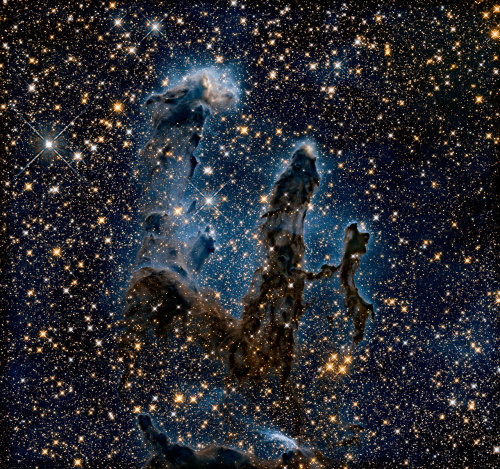
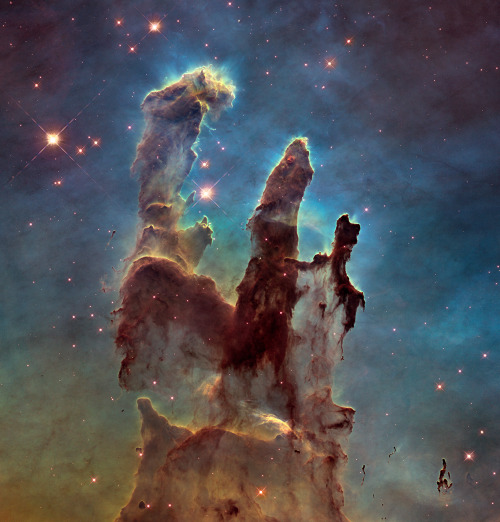
Sometimes... there’s more than meets the eye. 👀 You’re looking at two very different takes on an iconic image.
Human eyes can see only a small portion of the range of radiation given off by the objects around us. We call this wide array of radiation the electromagnetic spectrum, and the part we can see visible light.
In the first image, researchers revisited one of Hubble Space Telescope’s most popular sights: the Eagle Nebula’s Pillars of Creation. Here, the pillars are seen in infrared light, which pierces through obscuring dust and gas and unveil a more unfamiliar — but just as amazing — view of the pillars. The entire frame is peppered with bright stars and baby stars are revealed being formed within the pillars themselves. The image on the bottom is the pillars in visible light.
Image Credit: NASA, ESA/Hubble and the Hubble Heritage Team
Make sure to follow us on Tumblr for your regular dose of space: http://nasa.tumblr.com.
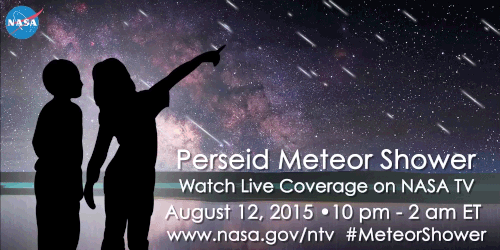
What are Perseid Meteors, and why should you be excited for them this year? Let us tell you!
The Perseid meteor shower is caused by debris from Comet Swift-Tuttle as it swings through the inner solar system and ejects a trail of dust and gravel along its orbit. When the Earth passes through the debris, specs of comet-stuff hit the atmosphere at 140,000 mph and disintegrate in flashes of light. Meteors from this comet are called Perseids because they seem to fly out of the constellation Perseus.

Last year, this meteor shower peaked during a bright “supermoon”, so visibility was reduced. Luckily, forecasters say the show could be especially awesome this year because the Moon is nearly new when the shower peaks on Aug. 12-13.
The best place to view the event is away from city lights around midnight. Under a clear, dark sky forecasters predict meteor rates as high as 100 per hour on peak night. So, get outside, look up and enjoy the show!
If your area has poor visibility on the peak night, we’ve got you covered! We’ll be hosting a live broadcast about the meteor shower from 10 p.m. EDT Wednesday, Aug. 12, to 2 a.m. Thursday, Aug. 13. In addition to footage from our live skycam, the program will highlight the science behind the Perseids, as well as our research related to meteors and comets. Tune in on NASA TV or our UStream Channel.
Each year we hold a Day of Remembrance. Today, Jan. 25, we pay tribute to the crews of Apollo 1 and space shuttles Challenger and Columbia, as well as other NASA colleagues who lost their lives while furthering the cause of exploration and discovery.
#NASARemembers
Learn more about the Day of Remembrance HERE.
Make sure to follow us on Tumblr for your regular dose of space: http://nasa.tumblr.com.
10 Questions About the 2017 Astronaut Class
We will select between eight and 14 new astronaut candidates from among a record-breaking applicant class of more than 18,300, almost three times the number of applications the agency received in 2012 for the recent astronaut class, and far surpassing the previous record of 8,000 in 1978.

The candidates will be announced at an event at our Johnson Space Center in Houston, Texas at 2 p.m. EDT on June 7. You can find more information on how to watch the announcement HERE.
1. What are the qualifications for becoming an astronaut?

Applicants must meet the following minimum requirements before submitting an application.
Bachelor’s degree from an accredited institution in engineering, biological science, physical science, computer science or mathematics.
Degree must be followed by at least 3 years of related, progressively responsible, professional experience or at least 1,000 hours of pilot-in-command time in jet aircraft
Ability to pass the NASA Astronaut physical.
For more information, visit: https://astronauts.nasa.gov/content/faq.htm
2. What have selections looked like in the past?

There have been 22 classes of astronauts selected from the original “Mercury Seven” in 1959 to the most recent 2017 class. Other notable classes include:
The fourth class in 1965 known as “The Scientists: because academic experience was favored over pilot skills.
The eighth class in 1978 was a huge step forward for diversity, featuring the first female, African American and Asian American selections.
The 16th class in 1996 was the largest class yet with 44 members – 35 U.S. astronauts and 9 international astronauts. They were selected for the frequent Space Shuttle flights and the anticipated need for International Space Station crewmembers.
The 21st class in 2013 was the first class to have 50/50 gender split with 4 female members and 4 male members.
3. What vehicles will they fly in?

They could be assigned on any of four different spacecraft: the International Space Station, our Orion spacecraft for deep space exploration or one of two American-made commercial crew spacecraft currently in development – Boeing’s CST-199 Starliner or the SpaceX Crew Dragon.
4. Where will they go?

These astronauts will be part of expanded crews aboard the space station that will significantly increase the crew time available to conduct the important research and technology demonstrations that are advancing our knowledge for missions farther into space than humans have gone before, while also returning benefits to Earth. They will also be candidates for missions beyond the moon and into deep space aboard our Orion spacecraft on flights that help pave the way for missions to Mars.
5. What will their roles be?

After completing two years of general training, these astronaut candidates will be considered full astronauts, eligible to be assigned spaceflight missions. While they wait for their turn, they will be given duties within the Astronaut Office at Johnson Space Center. Technical duties can range from supporting current missions in roles such as CAPCOM in Mission Control, to advising on the development of future spacecraft.
6. What will their training look like?

The first two years of astronaut candidate training will focus on the basic skills astronauts need. They’ll practice for spacewalks in Johnson’s 60-foot deep swimming pool, the Neutral Buoyancy Lab, which requires SCUBA certification. They’ll also simulate bringing visiting spacecraft in for a berthing to the space station using its robotic arm, Canadarm2, master the ins and outs of space station system and learn Russian.

And, whether they have previous experience piloting an aircraft of not, they’ll learn to fly our fleet of T-38s. In addition, they’ll perfect their expeditionary skills, such as leadership and fellowship, through activities like survival training and geology treks.
7. What kinds of partners will they work with?

They will join a team that supports missions going on at many different NASA centers across the country, but they’ll also interact with commercial partners developing spaceflight hardware. In addition, they will work with our international partners around the globe: ESA (the European Space Agency, the Canadian Space Agency, the Japan Aerospace Exploration Agency and the Russian space agency, Roscosmos.
8. How does the selection process work?

All 18,353 of the applications submitted were reviewed by human resources experts to determine if they met the basic qualifications. Those that did were then each reviewed by a panel of about 50 people, made up primarily of current astronauts. Called the Astronaut Rating Panel, that group narrowed to applicants down to a few hundred of what they considered the most highly qualified individuals, whose references were then checked.

From that point, a smaller group called the Astronaut Selection Board brought in the top 120 applicants for an intense round of interviews and some initial medical screening tests. That group is further culled to the top 50 applicants afterward, who are brought back for a second round of interviews and additional screening. The final candidates are selected from that group.
9. How do they get notified?

Each applicant selected to become an astronaut receives a phone call from the head of the Flight Operations Directorate at our Johnson Space Center and the chief of the astronaut office. They’re asked to share the good news with only their immediate family until their selection has been officially announced.
10. How does the on boarding process work?

Astronaut candidates will report for duty at Johnson Space Center in August 2017, newly fitted flight suits in tow, and be sworn into civil service. Between their selection and their report for duty, they will make arrangements to leave their current positions and relocate with their family to Houston, Texas.
Make sure to follow us on Tumblr for your regular dose of space: http://nasa.tumblr.com
Can You #SpotHubble?
Hey Tumblr! We’re Inviting You to #SpotHubble

Since its launch in 1990, the Hubble Space Telescope has sent back mind-blowing images that not only changed our understanding of our universe, but also changed where we see our universe.

Hubble is more than a science instrument; it’s a cultural phenomenon! Take a moment to think about where you’ve seen the Hubble Space Telescope or Hubble images in your daily life.

Maybe you walk by a mural inspired by Hubble images everyday on your way to work.

Perhaps you’ve even created art based on Hubble images.

We want to see the Hubble impact in your life! Share your photos with us on Instagram, Twitter, Flickr and Facebook. If a #SpotHubble image catches our eye, we may share your post on our NASA Hubble social media accounts.

Here’s how to #SpotHubble!
There are four social media platforms that you can use to submit your work:
Flickr: Submit your photos to the Spot Hubble Flickr Group
Instagram: Use the Instagram app to upload your photo, and in the description include #SpotHubble and #NASAGoddard
Twitter: Share your image on Twitter and include #SpotHubble in the tweet
Facebook: Share your image on Facebook and include #SpotHubble in the post
Please note, submissions are subject to certain terms and conditions.
Make sure to follow us on Tumblr for your regular dose of space: http://nasa.tumblr.com
Our New Satellite to Study the Edge of Space
We're about to launch a new satellite called ICON — the Ionospheric Connection Explorer — to study our planet's boundary to space.

The overlap between Earth's upper atmosphere and outer space is complicated and constantly changing. It's made up of a mix of neutral gas (like the air we breathe) and charged particles, where negatively charged electrons have separated from positively charged ions. This charged particle soup reacts uniquely to the changing electric and magnetic fields in near-Earth space, while weather conditions from here on Earth can also travel upwards and influence this region. This makes Earth's interface to space a dynamic, hard-to-predict region of the atmosphere.

Understanding what causes the changes in this region and how to predict them isn't just a matter of curiosity. Earth's boundary to space is home to many of our Earth-orbiting satellites, and it also plays a role in transmitting signals for communications and navigation systems. Unpredictable changes here can garble those signals and even shorten the lifetime of satellites.

ICON, launching on Nov. 7, will study this region with a unique combination of instruments. Orbiting about 360 miles above Earth, ICON will use its cameras to measure winds near the upper edge of Earth’s boundary to space and track atmospheric composition and temperature by studying a phenomenon called airglow. ICON also carries an instrument that will capture and measure the particles directly around the spacecraft, or in situ.

ICON is launching aboard a Northrop Grumman Pegasus XL rocket. On launch day, the Pegasus XL is carried out over the ocean by Northrop Grumman's L-1011 Stargazer aircraft, which takes off from Cape Canaveral Air Force Station in Florida. About 50 miles off the coast of Florida, the Pegasus XL drops from the plane and free-falls for about five seconds before igniting and carrying ICON into low-Earth orbit.

NASA TV coverage of the launch starts at 2:45 a.m. EST on Nov. 7 at nasa.gov/live. You can also follow along with the mission on Twitter, Facebook or at nasa.gov/icon.
Go Behind the Scenes of Science in Space

Gravity rules everything on Earth, from how our bodies develop to what our research can reveal, but what happens when we go 250 miles up to the International Space Station?

Get ready to go behind the scenes of what it takes to get science to space, and meet the people who make it happen.

Introducing Season 4 of NASA Explorers: Microgravity. Floating isn’t just fun. Microgravity could open the door to discovery.
You’ve seen things floating in space, but why does that happen and how does it affect science being conducted aboard the International Space Station?
Microgravity makes the International Space Station the perfect place to perform research that is changing the lives of people on Earth, and preparing us to go deeper into space. This season on our series NASA Explorers, we are following science into low-Earth orbit and seeing what it takes to do research aboard the space station.
Follow NASA Explorers on Facebook to catch new episodes of season 4 every Wednesday!
10 Out of this World NASA Spinoff Technologies
What is a spinoff? Great question! A NASA spinoff is a technology, originally developed to meet our mission needs that has been transferred to the public and now provides benefits as a commercial product or service. Basically, we create awesome stuff and then share it with the world. Here’s a list of just a few NASA spinoff technologies (in no particular order):
1. Enriched Baby Food

While developing life support for Mars missions, NASA-funded researchers discovered a natural source for an omega-3 fatty acid that plays a key role in infant development. The ingredient has since been infused in more than 99% of infant formula on the market and is helping babies worldwide develop healthy brains, eyes and hearts.
2. Digital Camera Sensors
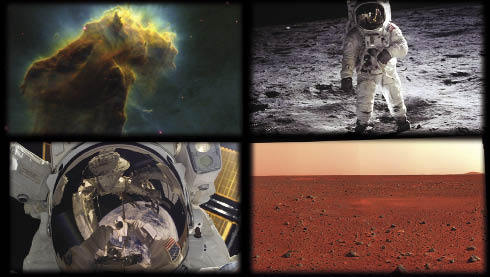
Whether you take pictures and videos with a DSLR camera, phone or even a GoPro, you’re using NASA technology. The CMOS active pixel sensor in most digital image-capturing devices was invented when we needed to miniaturize cameras for interplanetary missions.
3. Airplane Wing Designs

Did you know that we’re with you when you fly? Key aerodynamic advances made by our researchers - such as the up-turned ends of wings, called “winglets” - are ubiquitous among modern aircraft and have saved many billions of dollars in fuel costs.
4. Precision GPS

Uncorrected GPS data can be off by as much as 15 meters thanks to data errors, drift in satellite clocks and interference from Earth’s atmosphere. One of our software packages developed in the 1990s dials in these locations to within centimeters, enabling highly accurate GPS readings anywhere on the planet. One of our most important contributions to modern society, precise GPS is used in everything from personal devices and commercial airplanes to self-driving tractors.
5. Memory Foam

Possibly the most widely recognized spinoff, memory foam was invented by our researchers looking for ways to keep its test pilots and astronauts comfortable as they experienced extreme acceleration. Today, memory foam cushions beds, chairs, couches, car and motorcycle seats, shoes and even football helmets.
6. International Search and Rescue System

We pioneered the technology now used internationally for search and rescue operations. When pilots, sailors or other travelers and adventurers are stranded, they can activate a personal locator bacon that uses overhead satellites to relay their call for help and precise location to authorities.
7. Improvements to Truck Aerodynamics

Nearly every truck on the road has been shaped by NASA - literally. Agency research in vehicle aerodynamic design led to the curves and contours that help modern big rigs cut through the air with less drag. Our contributions to truck design have greatly reduced fuel consumption, perhaps by as much as 6,800 gallons per year for an average vehicle.
8. Shock Absorbers for Buildings and Bridges

Shock absorbers originally designed to survive the extreme conditions of space shuttle launches are now bracing hundreds of buildings and bridges in earthquake-prone regions all over the world. None of which have suffered even minor damage during an earthquake.
9. Advanced Water Filtration

We have recently discovered sources of water on the moon and Mars, but even so space is still practically a desert for human explorers, and every drop possible must be recycled and reused. A nanofiber filer devised to purify water in orbit is currently at work on Earth. From devices that supply water to remote villages, to a water bottle that lets hikers and adventurers stay hydrated using streams and lakes, our technology is being utilized.
10. Invisible Braces

A company working with NASA invented the translucent ceramic that became the first invisible dental braces, which would go on to become one of the best-selling orthodontic products of all time.
So, now that you know a few of the spinoff technologies that we helped develop, you can look for them throughout your day. Visit our page to learn about more spinoff technologies: https://spinoff.nasa.gov
Make sure to follow us on Tumblr for your regular dose of space: http://nasa.tumblr.com
-
 watch reblogged this · 1 year ago
watch reblogged this · 1 year ago -
 unknown-uwoit liked this · 5 years ago
unknown-uwoit liked this · 5 years ago -
 megamaymun-blog liked this · 5 years ago
megamaymun-blog liked this · 5 years ago -
 camwarva liked this · 5 years ago
camwarva liked this · 5 years ago -
 eirstohter liked this · 5 years ago
eirstohter liked this · 5 years ago -
 nasatranscription reblogged this · 5 years ago
nasatranscription reblogged this · 5 years ago -
 afrohouseking liked this · 5 years ago
afrohouseking liked this · 5 years ago -
 warlockapprentice liked this · 5 years ago
warlockapprentice liked this · 5 years ago -
 gigasena liked this · 5 years ago
gigasena liked this · 5 years ago -
 skcirthinq reblogged this · 5 years ago
skcirthinq reblogged this · 5 years ago -
 blog-rama-blog1 reblogged this · 5 years ago
blog-rama-blog1 reblogged this · 5 years ago -
 insertanonymousname liked this · 5 years ago
insertanonymousname liked this · 5 years ago -
 elkinodawkins liked this · 5 years ago
elkinodawkins liked this · 5 years ago -
 vagueandunknown liked this · 5 years ago
vagueandunknown liked this · 5 years ago -
 akasanata reblogged this · 5 years ago
akasanata reblogged this · 5 years ago -
 qweenofghosts liked this · 5 years ago
qweenofghosts liked this · 5 years ago -
 lennoxs liked this · 5 years ago
lennoxs liked this · 5 years ago -
 nicoleiswayhaught liked this · 5 years ago
nicoleiswayhaught liked this · 5 years ago -
 sadfransisko reblogged this · 5 years ago
sadfransisko reblogged this · 5 years ago -
 dropfromtop liked this · 5 years ago
dropfromtop liked this · 5 years ago -
 lucmarcou liked this · 5 years ago
lucmarcou liked this · 5 years ago -
 lovinredhood liked this · 5 years ago
lovinredhood liked this · 5 years ago -
 maxlucche liked this · 5 years ago
maxlucche liked this · 5 years ago -
 bigcris4144 liked this · 5 years ago
bigcris4144 liked this · 5 years ago -
 bi-streetcat liked this · 5 years ago
bi-streetcat liked this · 5 years ago -
 daiylor liked this · 5 years ago
daiylor liked this · 5 years ago -
 passionatedisdain liked this · 5 years ago
passionatedisdain liked this · 5 years ago -
 spacevoyage reblogged this · 5 years ago
spacevoyage reblogged this · 5 years ago -
 spacevoyage liked this · 5 years ago
spacevoyage liked this · 5 years ago -
 fellowitch liked this · 5 years ago
fellowitch liked this · 5 years ago -
 delicatemusictale liked this · 5 years ago
delicatemusictale liked this · 5 years ago -
 malecus liked this · 5 years ago
malecus liked this · 5 years ago -
 i-mostly-reblog-things liked this · 5 years ago
i-mostly-reblog-things liked this · 5 years ago -
 i-mostly-reblog-things reblogged this · 5 years ago
i-mostly-reblog-things reblogged this · 5 years ago -
 ritzbot liked this · 5 years ago
ritzbot liked this · 5 years ago -
 gautrau liked this · 5 years ago
gautrau liked this · 5 years ago -
 its-all-hogietastic reblogged this · 5 years ago
its-all-hogietastic reblogged this · 5 years ago -
 its-all-hogietastic liked this · 5 years ago
its-all-hogietastic liked this · 5 years ago
Explore the universe and discover our home planet with the official NASA Tumblr account
1K posts